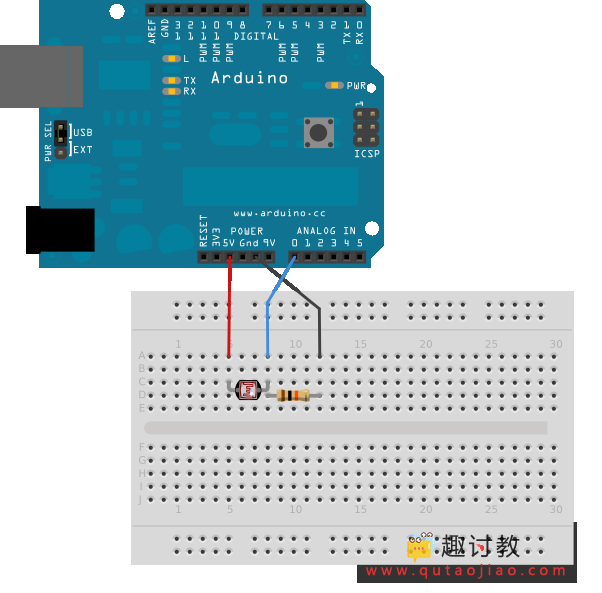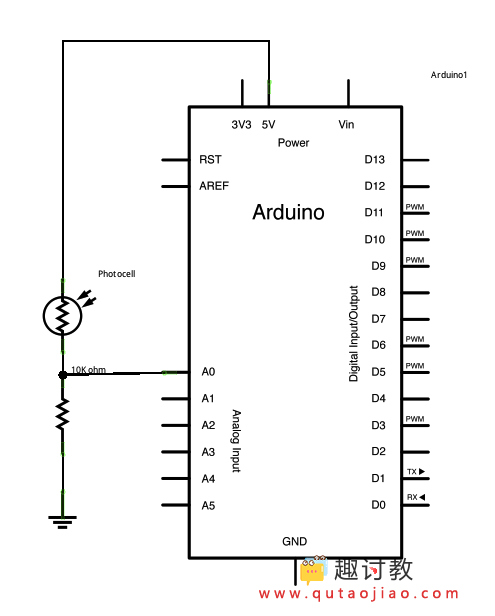释放双眼,带上耳机,听听看~!
一个if声明允许你选择两个分开的选项,真或假。当有超过2个的选项,你可以用多个if声明,或者你可以用switch声明。switch允许你选择多个选项。这个教程示范怎样用它在四种光电阻的状态下切换开关:全黑,昏暗,中等,明亮。
简介
- 一个if声明允许你选择两个分开的选项,真或假。当有超过2个的选项,你可以用多个if声明,或者你可以用switch声明。switch允许你选择多个选项。这个教程示范怎样用它在四种光电阻的状态下切换开关:全黑,昏暗,中等,明亮。
- 这个程序首先读取光敏电阻。然后它用map()函数来使它的输出值符合四个值之一:0,1,2,3。最后,用switch()声明来打印对应的信息到电脑里。
硬件要求
- Arduino or Genuino开发板
- 光敏电阻, 或者 其他模拟传感器
- 10kΩ 电阻
- 连接线
- 面包板
电路
光敏电阻通过一个分压电路连接到模拟输入pin0。一个10k ohm电阻补充分压器的另一部分,从模拟输入pin0连到地。analogRead()函数从这个电路返回一个0-600的范围值。

原理图

样例代码
// these constants won't change. They are the
// lowest and highest readings you get from your sensor:
const int sensorMin = 0; // sensor minimum, discovered through experiment
const int sensorMax = 600; // sensor maximum, discovered through experiment
void setup() {
// initialize serial communication:
Serial.begin(9600);
}
void loop() {
// read the sensor:
int sensorReading = analogRead(A0);
// map the sensor range to a range of four options:
int range = map(sensorReading, sensorMin, sensorMax, 0, 3);
// do something different depending on the
// range value:
switch (range) {
case 0: // your hand is on the sensor
Serial.println("dark");
break;
case 1: // your hand is close to the sensor
Serial.println("dim");
break;
case 2: // your hand is a few inches from the sensor
Serial.println("medium");
break;
case 3: // your hand is nowhere near the sensor
Serial.println("bright");
break;
}
delay(1); // delay in between reads for stability
}


















